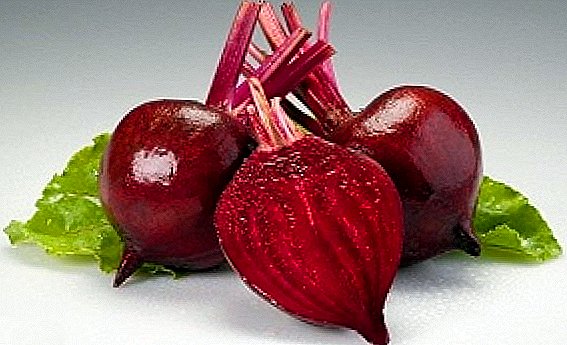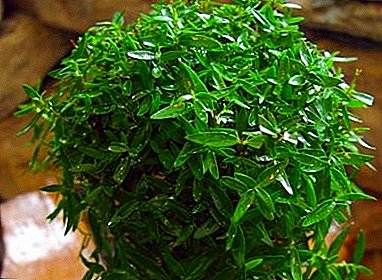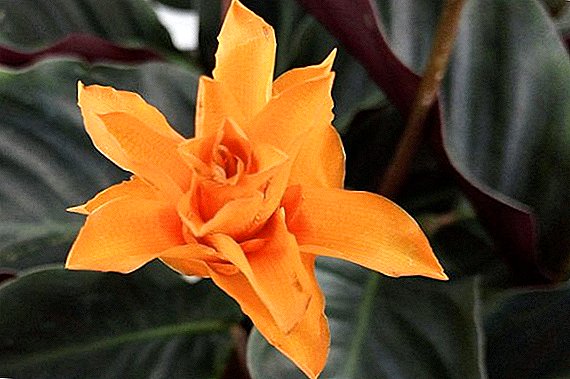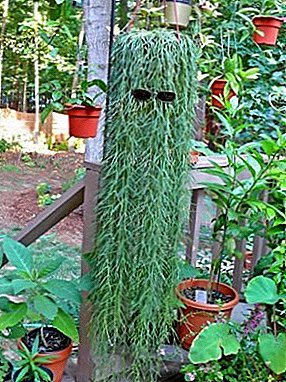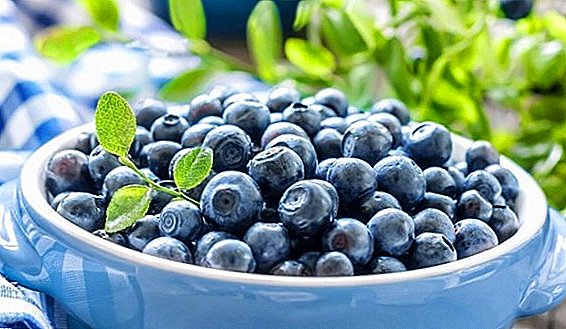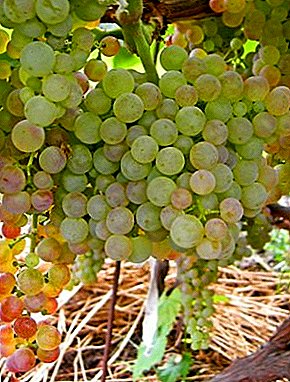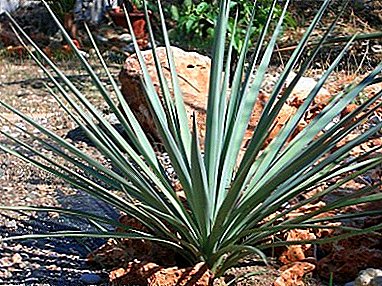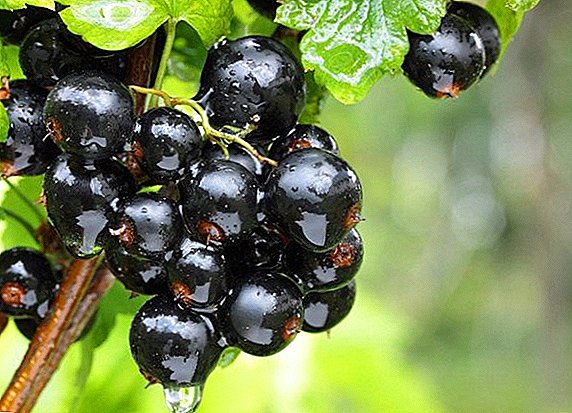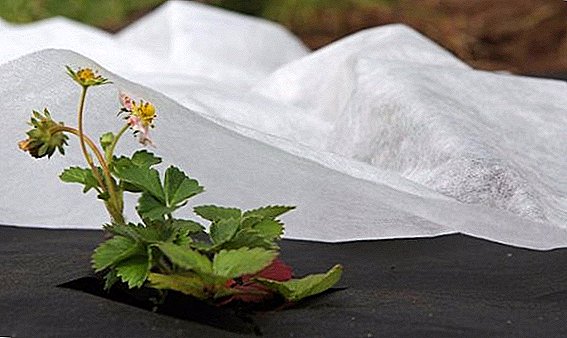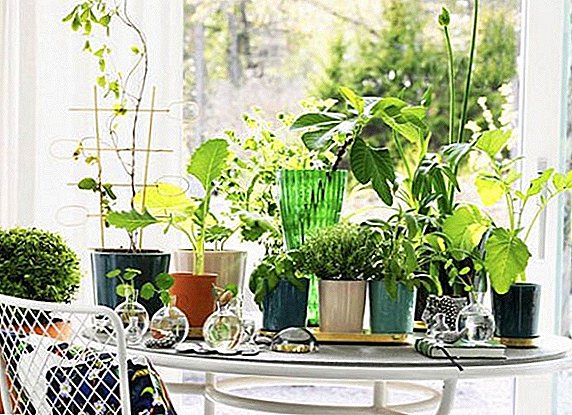 Indoor plants allow you to create in the room incredibly beautiful green "islands" where you can have a good time, relax, gain strength. With their help, it is easy to transform and refresh even the most dull and gray interior. Many domestic plants become permanent inhabitants of the house, especially if they do not require special care and special conditions of detention. About the most beautiful indoor plants, we will tell you further.
Indoor plants allow you to create in the room incredibly beautiful green "islands" where you can have a good time, relax, gain strength. With their help, it is easy to transform and refresh even the most dull and gray interior. Many domestic plants become permanent inhabitants of the house, especially if they do not require special care and special conditions of detention. About the most beautiful indoor plants, we will tell you further.
Abutilon
The evergreen shrub abutilon attracts the attention of flower growers with its unusual, bright, decorative look, resembling a maple tree with original inflorescences in the form of Chinese lanterns.  The birthplace of the flower is Brazil. Today it grows in tropical and subtropical regions, in India, on the territory of African states, Australia. The room maple, as the plant is also called, belongs to the genus Malvaceae and has about 100 species.
The birthplace of the flower is Brazil. Today it grows in tropical and subtropical regions, in India, on the territory of African states, Australia. The room maple, as the plant is also called, belongs to the genus Malvaceae and has about 100 species.
A feature of the culture is its large bright flowers, the color of which, depending on the species, can vary from pale yellow to deep red. The flowers are in the form of lanterns or bells that simply dot the stem. Abutilon blooms from April to November, but when creating comfortable conditions for it, the flowering period can last year round.
Familiarize yourself with the most popular varieties of abutilon and the secrets of its cultivation.
Growing a flower does not create much trouble for flower growers. For habitat, you must choose a well-lit places. With a lack of light, for example, in the winter, an additional source will be needed, otherwise the tree will begin to shed its leaves and stop blooming. It is recommended to ensure that the soil does not overdry and is always slightly moist.  Once every 2-3 years, an adult culture needs a transplant; young people need to be transplanted annually. A mixture of turf, leaf soil, humus, peat and sand is perfect as a soil.
Once every 2-3 years, an adult culture needs a transplant; young people need to be transplanted annually. A mixture of turf, leaf soil, humus, peat and sand is perfect as a soil.
This houseplant is susceptible to spider mite, whitefly, aphids, and mealybugs. For the destruction of pests using special drugs - fungicides.
Did you know? In order to form a beautiful, decorative, lush crown on a tree, it is recommended to regularly pinch the tops of young shoots.
Aerides
An attractive orchid with extraordinarily beautiful white-lilac flowers, which emit a "delicious" scent, deserves to take a worthy place in the collection of home plants. Aerides is a perennial culture of the Orchid family, which can grow up to 1.5 m in height. It is characterized by thin, fleshy leaves up to 20 cm in length, inflorescence in the form of a spikelet. Airborne flowers consist of six petals, white-lilac or white-red color. Flowering plant throughout the summer months.  In order for a flower to please for many years with its amazing appearance and regular flowering, it needs to provide special conditions. He does not like direct sunlight, prefers diffused light or partial shade. During flowering, the plant should provide good watering, in winter, moisture should be reduced.
In order for a flower to please for many years with its amazing appearance and regular flowering, it needs to provide special conditions. He does not like direct sunlight, prefers diffused light or partial shade. During flowering, the plant should provide good watering, in winter, moisture should be reduced.
Important! It is strictly forbidden to irrigate aereides with cold water, as its root system may die. For irrigation it is better to use separated, soft, warm water.The flower does not need regular feeding, just as in pruning. If necessary, the plant should be transplanted. Do it in the spring. The earth mixture for a flower should consist of fern roots, peat and fallen leaves, in the ratio: 3: 3: 2. It is recommended to add one part of coal and pieces of pine bark to the soil.
 The plant can be exposed to the harmful effects of parasites such as scab, spider mite, mealybug, slugs. At the slightest suspicion of the presence of the parasite, it is necessary to begin an active struggle with it, using special preparations.
The plant can be exposed to the harmful effects of parasites such as scab, spider mite, mealybug, slugs. At the slightest suspicion of the presence of the parasite, it is necessary to begin an active struggle with it, using special preparations.Euphorbia Mil
One of the most beautiful representatives of the family of Euphorbia is Euphorbia Mil, popularly called the crown of thorns. It is a small shrub brought to Europe from Africa and from the island of Madagascar. A distinctive feature of milkweed is its thick columnar stem, covered with ribbed leaves with prickles at the edges. Euphorbia blooms throughout the year, small, inconspicuous flowers of yellow color appear on it.
Other varieties of milkweed have a no less interesting appearance.

Did you know? Beauty and decorative appearance of this plant give no flowers, namely the leaves. Flowers are collected in a goblet-shaped inflorescence, at the base of which are covering leaves. Bright, pink leafy plates provide an euphorbia spectacular "appearance."Spurge Mile requires constant lighting, so in the winter you need to install additional lamps. The temperature in the room should not be below +14 ° C. During the period of intensive growth and flowering, the plant needs good watering. In winter, it is recommended to reduce moisture, as spurge enters a period of rest. With a lack of moisture, he sheds leaves, but does not die. Spurge should be regularly fed with special mixtures for succulents. The plant also likes spraying and washing, and the level of moisture is not whimsical.
 Euphorbia Mile may encounter pests, among which the most common are: spider mites, scutes, whiteflies, aphids. To combat them, effective drugs such as "Intavir", "Fufan", "Fitoverm".
Euphorbia Mile may encounter pests, among which the most common are: spider mites, scutes, whiteflies, aphids. To combat them, effective drugs such as "Intavir", "Fufan", "Fitoverm".Asparagus
Evergreen perennial plant - asparagus - can be seen in almost all apartments or private houses. Externally, the flower resembles asparagus, and for good reason, since it belongs to the Asparagus family. The homeland of culture is the southern and eastern regions of Africa, it is also distributed in South America.
Learn about the most popular types of asparagus and the care of indoor plants.
A feature of asparagus is the absence of the usual leaves, instead of them are flat, needle-shaped branches that act as leaves. During flowering, small red berries appear on the plant.  Since asparagus in nature has a wide area of distribution, at home it is simple and unpretentious to care, does not require special conditions of detention.
Since asparagus in nature has a wide area of distribution, at home it is simple and unpretentious to care, does not require special conditions of detention.
Despite their simplicity in care, many gardeners often complain that asparagus turns yellow and showered.
The plant likes good lighting, but not direct sunlight, can calmly adapt to the shade. Comfortable summer temperature is + 20-24 ° С, in winter - + 15-18 ° С. All types of plants do not tolerate low humidity, so they need to be regularly sprayed or washed. During the period of flowering and growth it is recommended to provide decorative "asparagus" with good, but not excessive watering. In winter, you need to minimize it.
Important! Even in winter, the soil should not be allowed to dry out. The soil should always remain slightly moist.As young plants grow very quickly, they need an annual transplant. It is enough to replant adult flowers once in 2-3 years. Transplantation is recommended in the spring.
 Asparagus can sometimes overcome various pests: aphids, thrips, scale insects. The plant does not tolerate treatment with chemicals, so it is desirable to systematically conduct a visual inspection of the twigs for the presence of pests and deal with them with plain water or a soap and vitriol solution.
Asparagus can sometimes overcome various pests: aphids, thrips, scale insects. The plant does not tolerate treatment with chemicals, so it is desirable to systematically conduct a visual inspection of the twigs for the presence of pests and deal with them with plain water or a soap and vitriol solution.Familiarize yourself with the features of the care of asparagus Sprenger and asparagus hypoxia.
Crassula
Crassula, or money tree, is perhaps the most beloved house plant that does not require special care. It loves bright places, but at the same time, it can settle down perfectly in the shade, you can not spray it, water it infrequently.
The money tree is a succulent plant of the Tolstians family. In nature, it is found in arid regions of the globe, particularly in Africa, on the island of Madagascar, the Arabian Peninsula.
Crassula room is not only able to please the grower eye, it also has many healing properties.

Important! Fertilizers must be applied to wet soil, after watering.Crassula care is quite simple. She prefers sunny places, but without direct sunlight, and fresh air. In winter, the temperature in the room should not fall below +10 ° C. Water the plant once a week in the spring and once every two weeks in the winter. A temporary lack of moisture in a money tree is easier to survive than overflow, since excess water can provoke flower rot.
About once every 30 days during the period of active growth (April-September), the plant must be fed. For this purpose, universal fertilizers or solutions intended for cacti.
Crassula is recommended to be replanted once every two years in spring. Substrates for succulents, which are composed of soddy earth and sand, predominate for the soil mixture. The danger for the money tree is the mealybug.
Familiarize yourself with the most common types of fat women, methods of dealing with their diseases and pests, as well as the features of proper Krassoule transplantation into a new pot.
Spurting fat
The fat euphorbia is an evergreen, slow growing, leafless, succulent plant of the Euphorbia family. Externally, it looks like a cactus, has a shape in the form of a light green ball, covered with needles with eight flat ribs. Flowering can be observed very rarely, mostly in summer. Inflorescences, consisting of male or female flowers, form a kind of crown, which is located on the top of milkweed.  Since succulent does not produce lateral shoots, it is propagated exclusively by seed. The plant is completely unpretentious in the care, the main rule - to provide him with a sufficient amount of heat and light. The most suitable soil mixture is the traditional ground for cacti. Spurge does not need regular transplantation. It is transplanted in cases where the root system completely fills the container.
Since succulent does not produce lateral shoots, it is propagated exclusively by seed. The plant is completely unpretentious in the care, the main rule - to provide him with a sufficient amount of heat and light. The most suitable soil mixture is the traditional ground for cacti. Spurge does not need regular transplantation. It is transplanted in cases where the root system completely fills the container.
In summer, the plant should be well watered and to prevent the drying of the soil. In winter, when it is at rest, it is recommended to reduce watering.
In the process of its growth, succulent can face a number of problems:
- white flies on the stem: evidence of whitefly lesions;
- sticky surface or yellow spots: they speak about the presence of a mealy worm;
- fluffy spots: are signs of mold.

Trachyandra
Thanks to its original and unusual look, the ornamental plant of trachiandra became in 2017 a new fashion trend in floristic design.
Trachyandra is a perennial plant of the Asphodel family, which is considered to be the birthplace of South Africa. Succulent different long fibrous roots, dark green leaves, twisted into a spiral and collected in the rosette. The flower of the plant looks like an artificial one, and resembles asparagus pods looking upward.
One of the most unpretentious, but very beautiful and unusual groups of indoor plants are succulents.
Trachyandr belongs to the light-loving cultures, and therefore needs constant light and fresh air. The more light and air she receives, the more active her growth will be. The optimum temperature is about +22 ° С. It is necessary to water a plant once in 5-6 days, in the winter the quantity of waterings is reduced to two times a month. Water must be taken warm, separated and poured into the pan.  Succulent transplants should be every four years. It must also be regularly fertilized with minerals intended for decorative leafy crops. The most dangerous for the plant is abundant watering. In such cases, the leaves of trachiandra become very soft, thin, cease to curl. Therefore, it is imperative to adjust the watering.
Succulent transplants should be every four years. It must also be regularly fertilized with minerals intended for decorative leafy crops. The most dangerous for the plant is abundant watering. In such cases, the leaves of trachiandra become very soft, thin, cease to curl. Therefore, it is imperative to adjust the watering.
Asplenium
The representative of ferns - Asplenium or Kostenets - one of the most fragile and extraordinary domestic plants. In nature, it is distributed almost everywhere, but was first discovered in the tropics of Asia, Africa, and Australia.
We advise you to learn how to care for asplenium at home.
Asplenium is a herbaceous, perennial plant of a terrestrial species. It has spreading, feathery leaves of a smooth structure, dark green color, on which grow kidneys - sporangia. They fall away quickly, take root quickly on moist soil and grow actively.  With proper care fern grows well and develops. He loves when a lot of light, but reacts poorly to direct sunlight and drafts. In summer, the temperature in the room with asplenium should vary from + 20 to + 25 ° С, in winter - about + 18 ° С. The plant needs high humidity. In order to provide it, it is recommended to pour claydite into the tank and moisten it regularly. In the morning and in the evening it is possible to spray the leaves with soft, warm water.
With proper care fern grows well and develops. He loves when a lot of light, but reacts poorly to direct sunlight and drafts. In summer, the temperature in the room with asplenium should vary from + 20 to + 25 ° С, in winter - about + 18 ° С. The plant needs high humidity. In order to provide it, it is recommended to pour claydite into the tank and moisten it regularly. In the morning and in the evening it is possible to spray the leaves with soft, warm water.
Every year in spring Kostenets is transplanted. To do this, take a special soil for ferns or prepare the mixture independently: three parts of sod land, two parts of peat, one part of humus and sand. During active growth, Asplenium is recommended to be fed every two weeks, using complex mineral fertilizers. It is important not to transfuse the plant, otherwise its root system will rot.
The fern can be affected by spider mites, aphids, whiteflies, mealybugs. To get rid of parasites, the leaves are washed with soapy water, and then treated with insecticides. 
Havortiya
Haworthia is a perennial herb of the Asfodelova subfamily. Culture got its name in honor of Adrian Haworth, a botanist from England, who first described the species.
The culture is remarkable for its unusual fleshy, oblong leaves, which are gathered near the roots in a rosette. On one bush can grow up to a dozen of these outlets. The shape of the leaves, depending on the variety, is triangular, oval, scaly. On top of the leaves are covered with numerous warts. The plant blooms in small, pale pink or light-green flowers.  In the conditions of the house havortia gets acclimatized well, grows and multiplies. It is preferable for her to choose a bright place without direct sunlight. In winter, when there is a period of rest, the culture should be moved to a cooler place with good lighting. She likes moderate watering, she grabs two irrigations a week. In the cold watering is reduced to once a month.
In the conditions of the house havortia gets acclimatized well, grows and multiplies. It is preferable for her to choose a bright place without direct sunlight. In winter, when there is a period of rest, the culture should be moved to a cooler place with good lighting. She likes moderate watering, she grabs two irrigations a week. In the cold watering is reduced to once a month.
Find out more about proper care and common types of food.
Humidity in the room does not affect the growth or flowering, succulent can not spray. In the summer, it is advisable to put the pot on the loggia or balcony. During the growth period, the culture must be fed using a very weak solution of appropriate fertilizers.
It is recommended that Haworthia be transplanted into a low, wide and shallow container so that it grows upwards. For earthen mixture suitable substrate consisting of equal parts of turf and leaf land, as well as sand. Succulent grows well in weakly alkaline or neutral soil; in acidic soil it dies.
The plant can be damaged by spider mites, aphids, and mealy worm. In the presence of diseases, the affected areas should be removed with a sharp knife, and the cut cut with charcoal. 
Orchid Dracula
The Dracula Orchid is a unique epiphytic culture of the Orchid family, common in Central and South Americas. Homeland is Ecuador. The name of the plant is explained by the appearance of its flower, resembling the face of a small dragon.
In order for the orchid to take root at home, it needs to create conditions as close as possible to the natural ones. For planting fit transparent pot or wicker baskets, with numerous holes for drainage. The flower loves rich light, but not direct sunlight. Despite its origin, it does not tolerate heat well, the maximum summer temperature is +25 ° C.  Water the orchid should be only after the soil dries out completely. Watering is carried out on top or by immersion. If you do not give the ground to dry, the root system will begin to die. Dracula loves humidified air from 70 to 80%.
Water the orchid should be only after the soil dries out completely. Watering is carried out on top or by immersion. If you do not give the ground to dry, the root system will begin to die. Dracula loves humidified air from 70 to 80%.
The quality of the soil is perfect regular sphagnum. You can make a mixture of equal parts of the roots of a fern, sphagnum moss, charcoal and pine bark. Orchid does not have a pronounced rest period, but flower growers are advised to reduce watering after it has faded.
Replant the plant should be when its roots begin to crawl out of the drainage holes. The orchid is rather tender and fragile, therefore it is often exposed to pests. Ей могут угрожать тля, белокрылка, трипсы, щитовки, различные грибковые болезни. Для борьбы с паразитами листья и поврежденные корни обрезают, а растение обрабатывают спецрастворами. 
Венерина мухоловка
Венерина мухоловка (Дионея) относится к виду хищных растений, входящих в семейство Росянковых. In its own way, it is the only rare instance, and in Latin it means a mousetrap. Originally from South America, it can be found in nature in the marshes of the states of Georgia, New Jersey, and North Carolina.  Venus flytrap is a herbaceous insectivorous plant. It has a bulbous stalk, white flowers that are neatly collected on the peduncle in corymbose inflorescences. In early summer, the plant blooms, after which traps form in place of the flowers. The trap consists of two oppositely located to each other petals (shutters) with spikes on the edges. In the middle of the valves there are glands that attract insects with a specific odor. When the insect gets on the leaf, the sash closes, and the secretion of gastric juice begins, helping to digest food. After 5-10 days, after full digestion, the flycatcher opens the leaf and expects the next victim.
Venus flytrap is a herbaceous insectivorous plant. It has a bulbous stalk, white flowers that are neatly collected on the peduncle in corymbose inflorescences. In early summer, the plant blooms, after which traps form in place of the flowers. The trap consists of two oppositely located to each other petals (shutters) with spikes on the edges. In the middle of the valves there are glands that attract insects with a specific odor. When the insect gets on the leaf, the sash closes, and the secretion of gastric juice begins, helping to digest food. After 5-10 days, after full digestion, the flycatcher opens the leaf and expects the next victim.
Learn how to grow a Venus flytrap at home.
To grow a flower at home, he needs to provide natural conditions. He likes adequate lighting, at least 4-5 hours a day. To the temperature mode, the plant is not so whimsical and can withstand low temperatures up to +5 ° С. During active growth, it should be watered well with distilled or filtered water. In winter, the flower, which is at rest, is rarely watered.
Culture takes root well in moist and acidic soil. It will perfectly suit the soil of equal parts of moss and perlite. 
Important! It is strictly forbidden to use universal ground for the flycatcher. In it, it will just die.It is not necessary to feed the plant, but transplantation is recommended every 2-3 years. On the Venus flytrap rarely settle pests. Sometimes it can affect spider mites, gray mold or black fungus. Noticing signs of disease, the plant must be treated with fungicides.
Nepentes
Nepentes is a predatory, insectivorous shrub liana, originally from the tropical forests of Madagascar, Sri Lanka. The plant has long grassy stems, with which it climbs on the branches or pillars of trees. In addition to the leaves, jug-traps develop on the stem, releasing a special nectar that attracts insects.
Due to the fact that nepentes is a trap for insects, this plant is ranked as a predatory list.
In length, such traps can reach from 2.5 to 30 cm. Special cells are located on the inner edge of the lily pads that produce nectar, and the lily itself is filled with water to digest food. Insects crawl into a trap, it slams and opens only 5-8 hours later, after the complete disappearance of the victim. 
Did you know? Not only insects, but even birds, rodents, amphibians can get into the water lily-trap of nepentes..Unfortunately, it is very difficult to grow a plant at home, because it requires a lot of space and high humidity. Nepentes loves bright lighting; in the winter, additional light sources should be installed to provide him with a 16-hour day light.
The temperature in the room can fluctuate in summer from +22 to +26 ° С, in winter - not lower than +15 ° С. Nepentes is more capricious of moisture than watering. Water it should be moderate, it is preferable to apply the lower watering. In winter, this is done carefully, in small portions of water. As for humidity, the optimal level is 70-90%. In the summertime, the flower can be fed once every 2-3 weeks, using weak solutions intended for flower plants.
Transplant culture in spring, as needed. As the soil used a mixture of leaf earth, peat and sand, in a ratio of 3: 2: 1.  Nepentes are fed once a month. To do this, half of the water lilies are being thrown by a live moth, flies, and spiders. You can not feed all the "traps" at once, otherwise the plant will die due to excess nitrogen.
Nepentes are fed once a month. To do this, half of the water lilies are being thrown by a live moth, flies, and spiders. You can not feed all the "traps" at once, otherwise the plant will die due to excess nitrogen.
Selenitsereus
"The Queen of the Night" - selenitsereus - is a plant that impresses with its impressive appearance. The fast-growing culture with large flowers that produce an incredible aroma belongs to the family of cacti and is widespread in the tropics of South and Central America.
The stem of the succulent grows to 12 m, under favorable conditions, the increase per day can reach 2-2.5 cm. At the ends of the lashes are large, large flowers in the form of a crown, white, pink or cream. In the center of the plant there are colored stamens and ovaries. The peculiarity of the flower is that its flowers bloom only at night, during the day they fold into a ball, resembling coiled threads.  Selenitsereus is rarely found in the home because of its rare distribution. However, care for him is simple. "The Queen of Nights" prefers good lighting and perfectly tolerates even direct sunlight. She does not like artificial light, she reacts negatively to light fluctuations. During the growth period, the flower should be provided with a comfortable room temperature, in winter it can be moved to a cool place.
Selenitsereus is rarely found in the home because of its rare distribution. However, care for him is simple. "The Queen of Nights" prefers good lighting and perfectly tolerates even direct sunlight. She does not like artificial light, she reacts negatively to light fluctuations. During the growth period, the flower should be provided with a comfortable room temperature, in winter it can be moved to a cool place.
Important! Categorically it is impossible to subject selenitsereus to drafts or sharp temperature drops, otherwise it may die.Water the cactus should be as the drying of the topsoil. He does not tolerate hard, cold water, prefers settled, slightly acidified. Once every two weeks in the summer, it is recommended to plant the plant using special mixtures for cacti. Selenitsereus requires the constant formation of stems, which are carefully cut and suspended on supports.
Young plants should be transplanted every year, adults - as needed. The soil is suitable for them nutritious, rich in humus. Among the pests are scale insects, spider mites, felts. The only possible way to combat them is to treat the flower with fungicides with a narrow focus. 
Stapelia variegated
Stapelia variegated, often referred to by the people as "starfish" because of the shape of its flower, belongs to the Kutrov family. It is a culture from Africa, where it has perfectly got accustomed on the mountain slopes, forests and near water bodies. The stapelia are small in size from 10 to 60 cm and underdeveloped surface roots. At the base are fleshy, tetrahedral stems, greenish or bluish shades.
Check out other varieties of the stocks and the care of indoor plants.
The plant has no leaves, instead of them pubescent flowers are located, 5-30 cm in size. Succulent feature is considered to be pungent, even nasty flower scent, which can cause fits of nausea.  Care at home for the building berth is simple and is associated with seasonality. In the summer season, she prefers a bright and warm environment to +26 ° С, in the winter she rests, likes a temperature not higher than +15 ° С.
Care at home for the building berth is simple and is associated with seasonality. In the summer season, she prefers a bright and warm environment to +26 ° С, in the winter she rests, likes a temperature not higher than +15 ° С.
Succulent does not require irrigation or abundant moisture. It is better not to peel it, since excess moisture leads to rotting of the roots. During the growth period, the culture is fed with mixtures for succulents and cacti, and in the winter feeding is stopped. With the onset of spring, young plants need to be transplanted into the soil, consisting of two parts of sod land, one part of sand and one part of charcoal.
Staple is affected by diseases and parasites, in most cases due to improper watering. Among the pests, spider mites, mealybugs, and aphids can live on it. Shop insecticides are used against them. 
Pseudolithos
Pseudolithos - an unusual in appearance and growth plant from the Lastovnev family, common in South Africa at Cape Horn. In Latin, the name translates as "false stone" ("pseudo" - false and "lithos" - stone), which corresponds to the shape of the plant stems, resembling small stones.
Succulent differs leafless, spherical lonely or bushy stems, 4-5 cm in diameter. The stems are densely covered with tubercles, in color and texture resembling cobblestones. The flowers are small, brown or brownish-red color with yellow grains.  For comfortable living, pseudolithos needs to create good lighting, a constant supply of fresh air, high temperature conditions: in summer - up to +29 ° С, in winter - no less than +18 ° С. The plant loves moderate, very accurate watering during active growth. During the rest period it is better not to water it. In the spring, it is recommended to gradually start feeding succulent with liquid fertilizer diluted by half. He does not need frequent transplants and prefers "cramped" living conditions. Transplant the plant as necessary, for this purpose, take the soil with a high content of sand, perlite and pumice.
For comfortable living, pseudolithos needs to create good lighting, a constant supply of fresh air, high temperature conditions: in summer - up to +29 ° С, in winter - no less than +18 ° С. The plant loves moderate, very accurate watering during active growth. During the rest period it is better not to water it. In the spring, it is recommended to gradually start feeding succulent with liquid fertilizer diluted by half. He does not need frequent transplants and prefers "cramped" living conditions. Transplant the plant as necessary, for this purpose, take the soil with a high content of sand, perlite and pumice.
Most flower is afraid of overflow. In just a few days, its root system can turn into a gelatinous substance. From the pests to the plant annoying mealybug.  Houseplants are a special kingdom in every home. Bright and low-key, large and small, traditional and exotic - they will become not just an exclusive interior decoration, but also a full-fledged family member, requiring proper care, watering and nutrition. With a minimum of effort and a little care, you can grow a truly luxurious, unique "flower garden", pleasing the eye for many years.
Houseplants are a special kingdom in every home. Bright and low-key, large and small, traditional and exotic - they will become not just an exclusive interior decoration, but also a full-fledged family member, requiring proper care, watering and nutrition. With a minimum of effort and a little care, you can grow a truly luxurious, unique "flower garden", pleasing the eye for many years.


